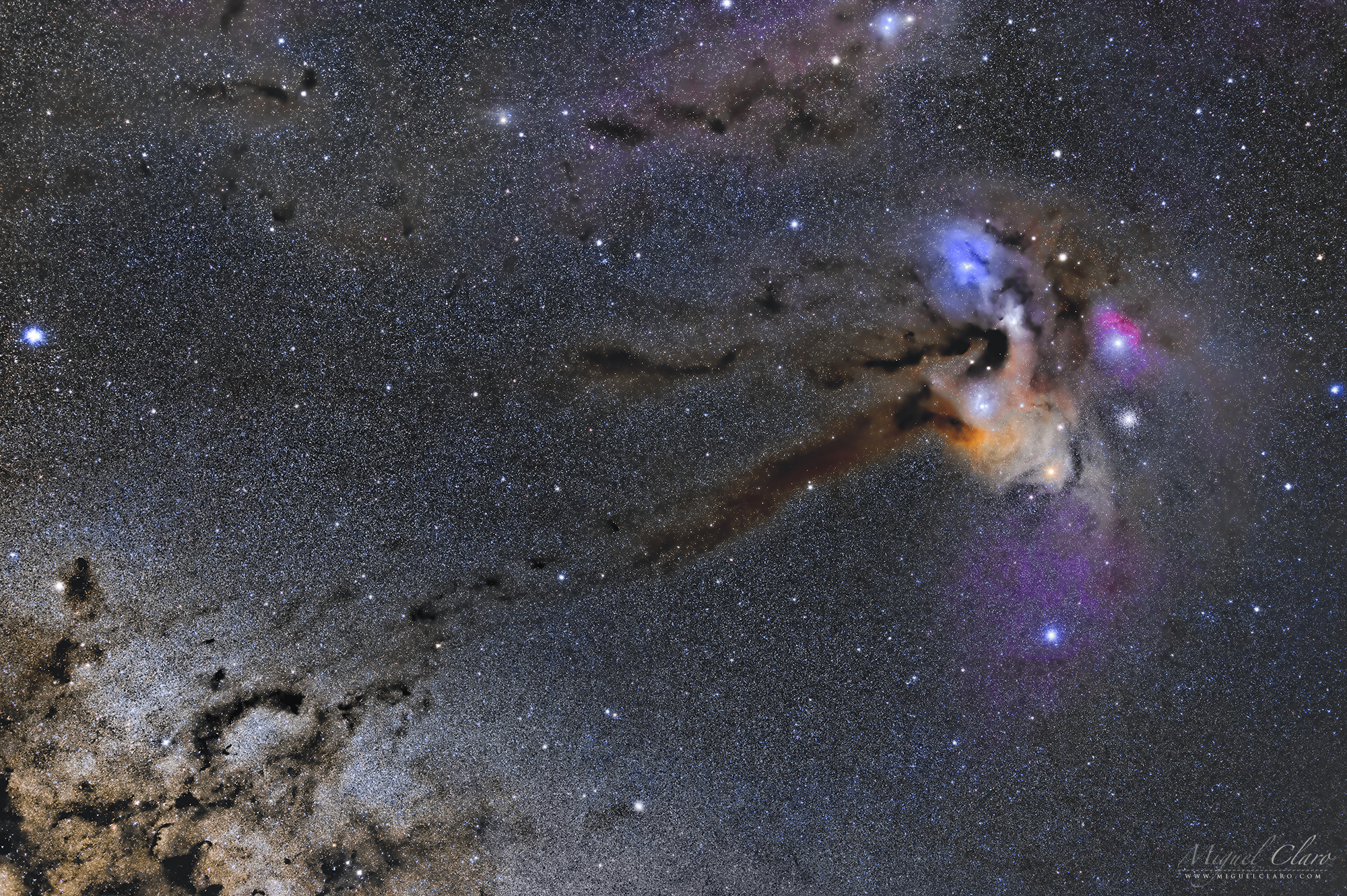- NASA has released a James Webb Space Telescope photograph of the Rho Ophiuchi cloud complex, which is the closest star-forming zone to Earth.
- This image commemorated one year after NASA released the first scientific results from the telescope.

What is Rho Ophiuchi Cloud Complex?
- The Rho Ophiuchi Cloud Complex is a molecular cloud in the Ophiuchus constellation.
- It is centred 1° south of the star Ophiuchi and stretches throughout the constellation.
- It is one of the nearest star-forming areas to the Solar System, at a distance of around 140 parsecs, or 460 light years.
- It is made up of many black nebulae, which are dense areas of interstellar dust and gas that block out background brightness.
- Numerous immature stellar objects, including as protostars, young stars, and brown dwarfs, can be found in the cloud complex.
- These celestial objects form when the cloud’s dense material collapses under gravity, resulting in the formation of new stars.
Observations Based on the Image
- Material Jets and Surrounding Gas/Dust: This graphic depicts how material jets emitted by young stars affect the surrounding gas and dust while lighting molecular hydrogen.
- Stellar Winds Carve a brilliant Cave: One section of the image depicts a star inside a brilliant cave carved out in space by stellar winds.
- The image shows an outstanding nebula with three bright young stars at the top, demonstrating the extent and detail of the jets and outflows.
Insights from the new findings
- Formation of New Suns: The Rho Ophiuchi image depicts the formation of new suns and planet-forming discs, which scientists say resembled the early solar system about 4.5 billion years ago.
- Violent Outbursts and Dusty Cocoons: The graphic depicts the process of stars and planetary systems forming, as well as dusty cocoons being shattered by violent outbursts, which are shown as red jets cutting through the cloud.
- Visibility through Dust: The Rho Ophiuchi core is frequently shrouded by a thick layer of dust, rendering it opaque to observatories that use visible light, such as the Hubble Space Telescope. JSWT, on the other hand, penetrates the dust, revealing the nascent stars within and shedding light on the early stages of star formation.
Source: https://scitechdaily.com/star-spangled-spectacle-james-webb-telescopes-stunning-year-of-cosmic-revelations/#:~:text=The%20subject%20is%20the%20Rho,from%20Webb's%20chaotic%20close%2Dup.
